When the TV news show “60 Minutes” reported that Lumber Liquidators’ laminate flooring, a synthetic product produced in China, failed to meet certain health and safety standards, many home owners panicked. Were their floors also releasing into the air (off-gassing) formaldehyde, a chemical commonly used in many building products?
Afterward, the U.S. Consumer Product Safety Commission tested levels released from some of the laminate flooring that had been sold in Lumber Liquidators’ U.S. stores. The Centers for Disease Control and Prevention and its Agency for Toxic Substances and Disease Registry determined exposure to the formaldehyde tested could cause irritation and breathing problems. But formaldehyde can potentially cause greater damage; it’s listed in a President’s Cancer Panel report as a known carcinogen.
Formaldehyde is just one in a huge family of chemical compounds that are lumped under the volatile organic compound umbrella. These substances raise concerns because the gasses they release can be toxic. Furthermore, VOCs are common in paints, stains, adhesives, and glues, which means that many otherwise safe building materials may make indoor air toxic because they’re paired with them.
That’s why more home owners are beginning to ask retailers, manufacturers, and contractors what VOCs may be in the materials, products, and furnishings they bring into their homes. But they also need to understand where these products originated and how they were made, installed, and finished, since unhealthy VOCs may be incorporated at various stages.
Joe Reina of No Limits Paint in Elmhurst, Ill., is among contractors already hearing these concerns and taking action. Clients ask him more frequently whether he exclusively uses paints with no or low VOCs (he does). “It started about one-and-a-half years ago and has picked up, especially with customers who have young children and are concerned about their overall health, not just if they have asthma or allergies,” says Reina.
Though the U.S. government is taking steps to outlaw many harmful chemicals in housing products, other countries like China have not moved in this direction. Also, the Environmental Protection Agency hasn’t yet set a benchmark for what’s safe. That lack of guidance means that labels that claim products are green may be misleading, says Joel Hirschberg, president and co-owner of Iowa-based Green Building Supply store, among the first in the country to focus on selling safe, environmentally friendly products to home owners and home builders.
These are just a few of the reasons why you, as a real estate professional, need to understand the issue. Advise clients to ask questions when they buy a house and when they purchase products, materials, and systems to remodel a home they already own or are thinking about selling.
Consider Common Sources of VOCs
Make sure you’re educated on this important subject. One detailed resource you might consider is Green Building Advisor, published online by The Taunton Press with information about designing, building, and remodeling sustainable, healthy homes. The U.S. Consumer Product Safety Commission is another good source of information.
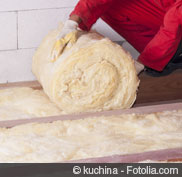 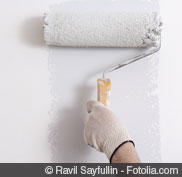 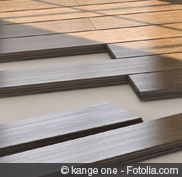 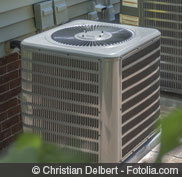  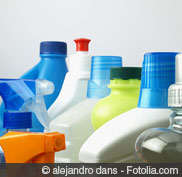 |
Key categories of potential off-gassing include:
- Insulation. In the past, some options contained asbestos or fiberglass batting with formaldehyde, though neither is permitted in new construction. Smarter choices include insulation from cotton (often blue-jean scraps), paper, soybeans, and milo (a grain). Caroline Blazovsky, author, national healthy-home expert, and founder of My Healthy Home, warns that some types like cellulose may be touted as safe but then are treated with unhealthy chemicals. In other cases, the problem stems from the installer not following a manufacturer’s guidelines.
- Paints and stains. Many manufacturers, including well-known larger companies, are debuting low- or zero-VOC lines, such as Benjamin Moore with its Aura and Natura brands. A small but growing number of manufacturers are making paints that contain no VOCs, such as Ecos and SafeCoat. Steve Skodak, executive director of the Painting and Decorating Contractors Association, says that as more consumers pay attention to and favor these low- or no-VOC options, the market will see an uptick in these types of products manufactured and sold.
- Flooring. The key in this category is to pay attention not just to the product, which may pass muster, but also to the adhesives and varnishes that adhere layers of solid pre-engineered boards together. One easy choice is to go with reclaimed boards that lack these attached layers. But if a finish is used to protect them, make sure it too is a healthy one, such as a natural oil, says Craig Margolies, product manager at The Hudson Co., based in Pine Plains, N.Y. The same guidelines also apply to certain cabinetry, walls, and beams, he says.
- HVAC systems appropriately vented to the outdoors will help remove unhealthy off-gassed air from a home, says Green Building Advisor senior editor Martin Holladay, who is also a former remodeler and builder. As homes have been sealed and tightened to be more energy-efficient, ventilation has become more important. Air purifiers are an additional aid, Hirschberg says. Furnaces, hot water heaters, and appliances should be serviced annually, too. “If they don’t work correctly, they put VOCs and unhealthy gases such as carbon monoxide into the air,” Blazovsky says.
- Furnishings may contain flame-retardant foam in cushions and pillows that off-gas. Stain repellants can also pose a risk. Again, suggest home owners check labels.
- Pesticides and household cleaning products can be another source of unhealthy chemicals, so go with nontoxic choices. Even plug-in air fresheners can release VOCs, says Holladay.
How to Minimize the Effect of VOCs
The positive news is that VOCs generally decrease over time as they evaporate into the air, and fresh air, good ventilation, and higher temperatures can speed evaporation. Some may “hang around” for varying periods depending on the level of VOC composition, air, and temperature, which is why home owners’ “behavior can make a difference,” says Blazovsky.
Besides making informed product choices, Hirschberg suggests you and your clients pay attention to how a room smells. “Go with your nose,” he says. “If something smells too strong, almost like a new car, it may be unhealthy. Find out what it is.”
Weigh Healthy Alternatives on the Market
It takes work to research a product’s chemical make-up by reading labels and asking experts, but your clients will appreciate your ready knowledge and sources you can recommend. The International Future Living Institute’s “Red List” cites chemicals to watch out for. Two other useful guides include the nonprofit Environmental Working Group and Tree Hugger.
Soybean-based spray foam insulation, which doesn’t rely on synthetic chemicals and which has a high R-value, can be found through a resource such as Biobased from Rhino Linings. Then there are retailers such as Hirschberg’s aforementioned Green Building Supply and Green Depot, a brick-and-mortar and online retailer based in Brooklyn, N.Y., with hundreds of products and a knowledgeable staff. Architecture and design firms such as Lake Flato in Austin, Texas, can help steer clients toward healthy choices such as formaldehyde-free cabinetry and millwork along with local products such as limestone, where there’s reduced concern about the chemical processes in the item’s country of origin.
But it’s also important to realize that just because a product is greener doesn’t mean that your clients won’t be chemically sensitive to it. “People react differently, so home owners need to find what works for them regardless of whether it’s green,” says Blazovsky.
Consider Hiring an Expert
It’s common for home buyers and sellers to bring in an inspector or structural engineer to check a listing’s stability and safety. But they can also have a home health inspector or environmental investigator assess indoor air quality. Robert Weitz, a certified microbial investigator and founder of RTK Environmental Group in Stamford, Conn., is often hired when a client detects a continuing bad odor or someone in the family develops respiratory problems or headaches. He typically charges by a home’s square footage, with an average fee between $495 and $600. Blazovsky, a certified Healthy Home Specialist and member of the Indoor Air Quality Association, performs similar inspections. Her price ranges from $400 to $800. Both will take air samples and send them to a laboratory for analysis. Blazovsky also conducts water safety and mold tests.
Weitz cautions buyers against assuming sellers will disclose indoor air quality problems. “They can make smart choices if they’re choosing, but need to know that the seller may not have all the information if they didn’t make the changes,” he says. Blazovsky agrees. “When in doubt, test!” she says. “It may be an expense up front, but it can help home owners avoid a bigger financial mistake in buying a home that could bring health problems.”



